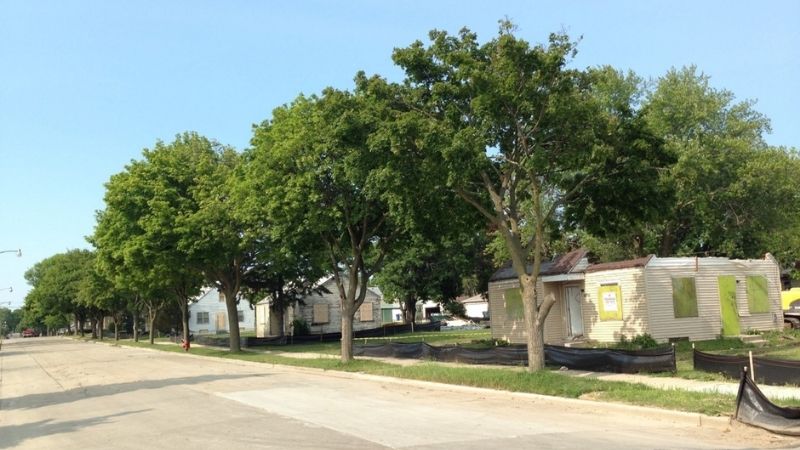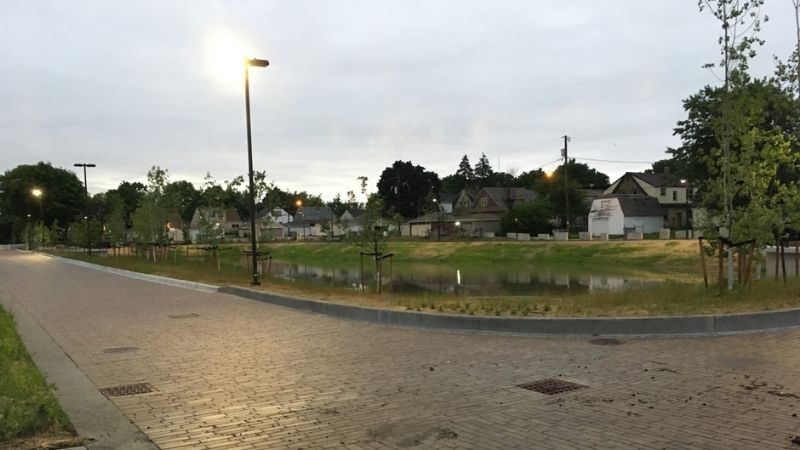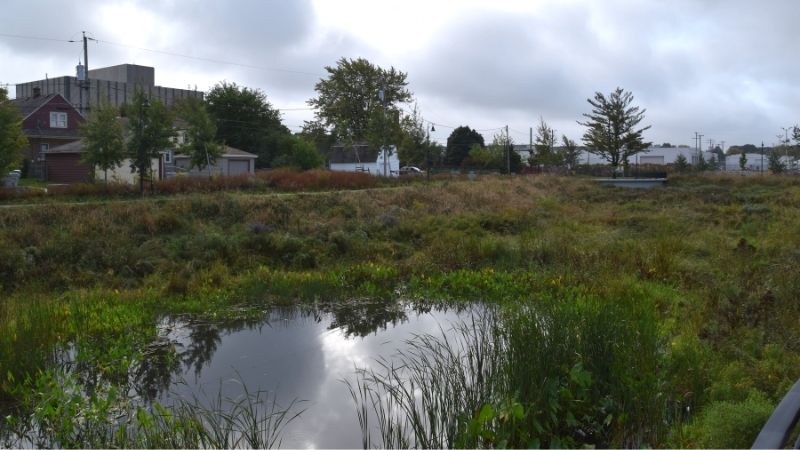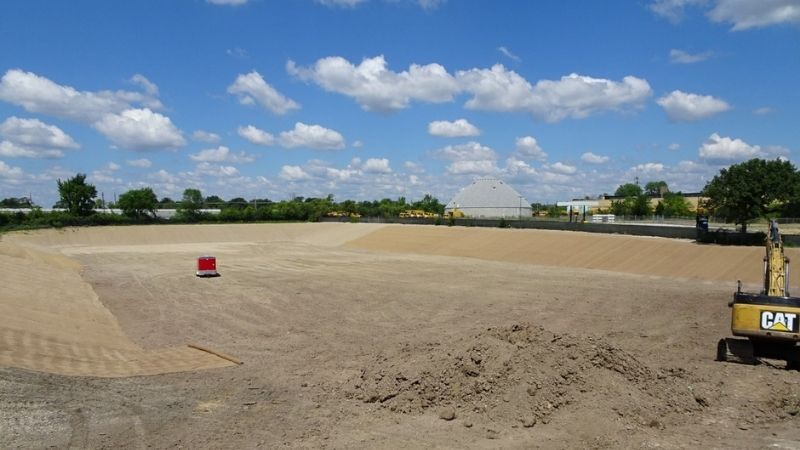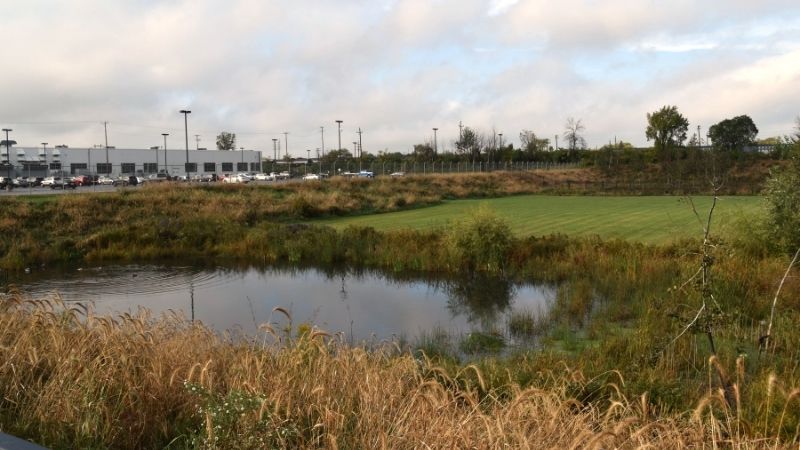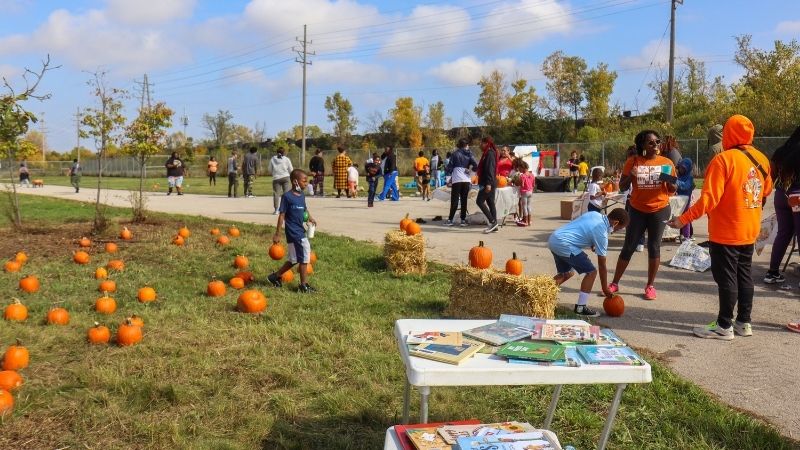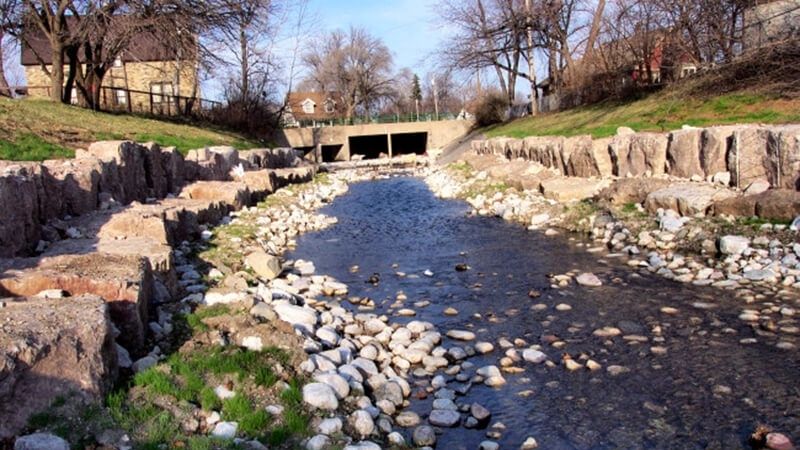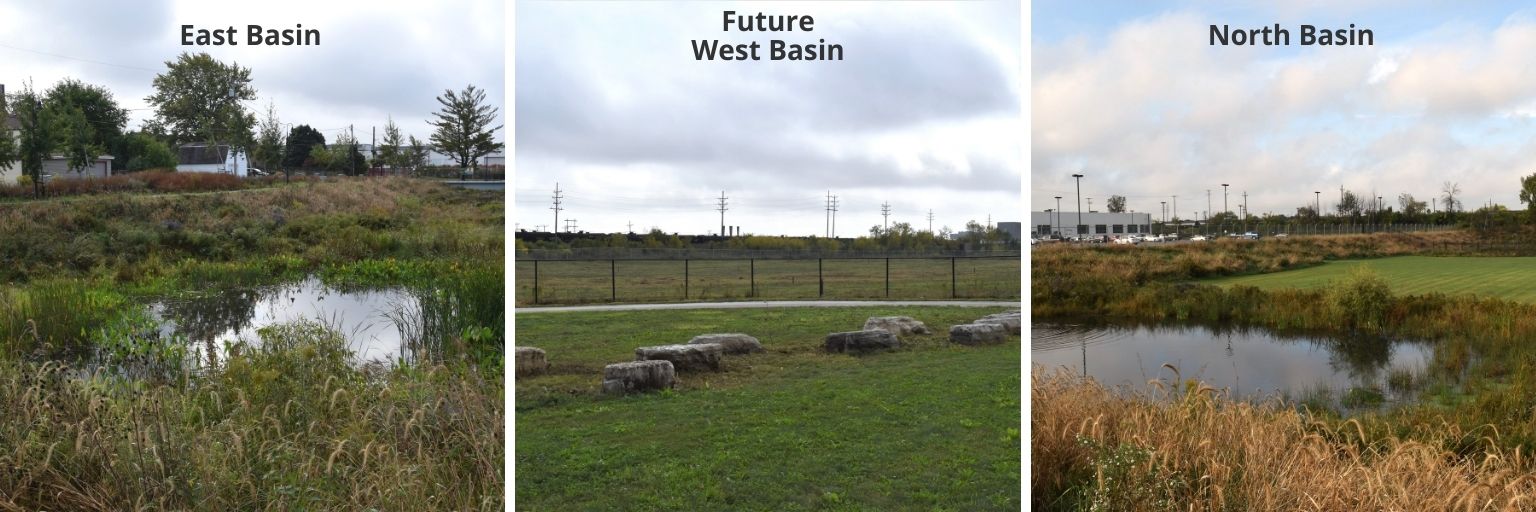
30th Street Corridor
The Problem: Severe Flooding
In the summer of 2008 and 2010, severe rainstorms resulted in over 32 million dollars in flood damage to homes and businesses in the 30th Street. Corridor between West Hampton Avenue and West Nash Street. In a 48-hour period from June 7-8, 2008, a record-breaking 7.18 inches of rain was recorded. Again, in July 2010, torrential rain dropped over eight inches of rain within 24 hours.
Key causes for the drainage problems that led to severe flooding in the area include:
- Stormwater runoff is restricted to pipes where vast wetlands and streams once flowed.
- Natural pathways for overland flow of stormwater are cut-off by 150 years of development and building
- Rivers and streams are stressed by fast run-off from the ever-increasing pavement and hard surfaces such as roof tops, parking lots, and roads.
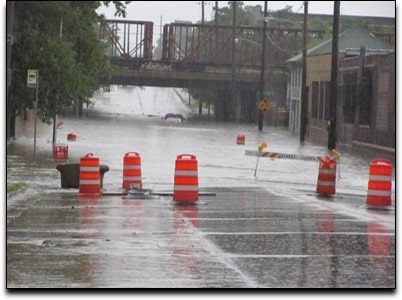

The Solution: Stormwater Basins
In response to the extreme flooding in 2008 and 2010, MMSD initiated the 30th Street Corridor Stormwater Study with the goal to develop a cost-effective stormwater management solution that can collect and hold excess stormwater to reduce flooding and protect water quality.
The selected approach detailed the construction of three, integrated stormwater basins and new storm sewers to carry stormwater from flood-prone areas to the basins then on to Lincoln Creek. The basins are designed as dry detention basins that fill whenever the stormwater from a rain event exceeds the capacity of the local storm sewer system - slowly releasing the water after the storms have passed. The East Basin also was also designed to collect and filter stormwater runoff from a 41-acre residential and industrial area.
What is a Stormwater Basin?
A stormwater basin is similar to a man-made pond that temporarily holds stormwater to reduce flooding. After the storm has passed, the water in the basin slowly releases to a nearby stream.
Phase 1 - Construction of the North and East Basins
The project would be built in two phases. The goals of the first phase were the construction of the North and East Basins located east of the CP Rail Corridor along North 31st Street. The North and East Basins are providing an interim improvement in stormwater flood management until the West Basin (Phase 2) is completed.
Additional goals of Phase 1 included preliminary work on the West Basin site located west of the railroad along North 35th St. The preliminary work for the West Basin included deconstruction of buildings, cleaning up the site, preliminary environmental work, and securing the site.

Flooding Impacts in 30th Street Corridor
Phase 2 - Construction of the West Basin
In the spring of 2021, the SmithGroup was contracted as the project’s design firm to develop the engineering design of the West Basin with environmental studies beginning summer of 2021. Stakeholder meetings, both formal and informal, also began summer of 2021 and will continue into 2022. Construction is planned for 2023.
The project integrates with the Lincoln Creek Flood Management project completed in 1998 which reduced the risk of stream flooding for more than 2,000 homes along a 9-mile stretch of the creek.
Geography and History
Before the land was developed, creeks meandered through this area providing overland pathways for rain to collect. There were low-laying marshlands where the water pooled.
The growing City of Milwaukee needed land for new industries, trains to transport products, and homes for the workforce employed by those industries and businesses. To meet development’s need for land, Lincoln Creek was redirected into concrete channels; streams and wetlands filled in.
As more development came into the area with its hard surfaces, rain could no longer soak into the ground or find its way to streams or wetlands. Over time, the quantity of stormwater became greater than the sewer system capacity and had nowhere to go but streets and basements.
The Community
While the 30th Street Corridor Stormwater Management Project itself was a complex engineering challenge, the neighborhood also has its own complex challenges -- crime-related safety and security concerns, economic disparity, and chronic unemployment. These critical issues were the overarching priorities of the residents.
While addressing these issues was not within the jurisdiction of MMSD, MMSD incorporated additional resources for the public information meetings including staff from City agencies and departments to help address the questions and concerns that were outside the bounds of the stormwater project.
To encourage greater community input, the number of formal public meetings was reduced in favor of smaller stakeholder meetings focused on the grassroots level, leveraging local neighborhood meetings and events.
The project also benefited from MMSD's green infrastructure initiative, Green Summers, which prioritized the 30th Street Corridor as one of its two focus areas. Clean Wisconsin helped residents better understand the challenge of stormwater in their neighborhoods and how they could help improve water quality through the installation of residential green infrastructure -- rain barrels, rain gardens, planting native flowers and grasses.
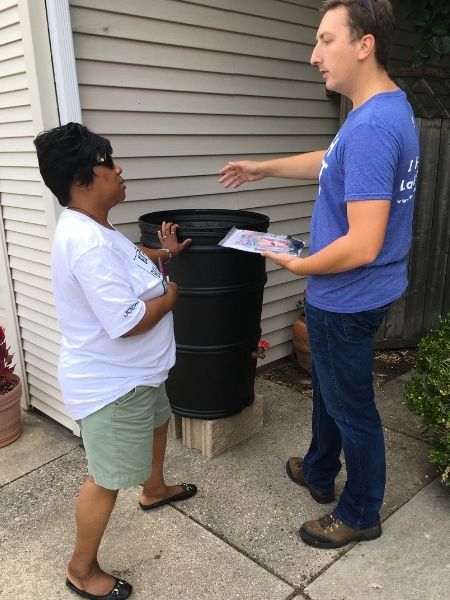

The finalized project design for the North and East Basins incorporated the community’s priorities and included new usable green space, an area to enjoy nature in the city, public art, a gathering space, and a safe place to walk and bike.
The North and East Basins became operational in 2018. Phase 1 of the project has met its flood management goals. Since 2018, no insurance claims have been filed regarding basement backups in this locale.
Early Community Engagement
Building on lessons learned in the construction of the North and East Basins, MMSD contracted with Northwest Side Community Development Corporation (NWSCDC) to lead community outreach efforts in preparation for community engagement for the West Basin.
NWSCDC staff helped establish neighborhood groups and initial contacts in the community, distributed materials and information about the project, and organized activities and events to connect residents to the West Basin site.
Explore More MMSD Projects

Lincoln Park Oxbow & Estabrook Falls
Learn about MMSD's Lincoln Park Oxbow & Estabrook Falls Milwaukee River Habitat Enhancement project.

